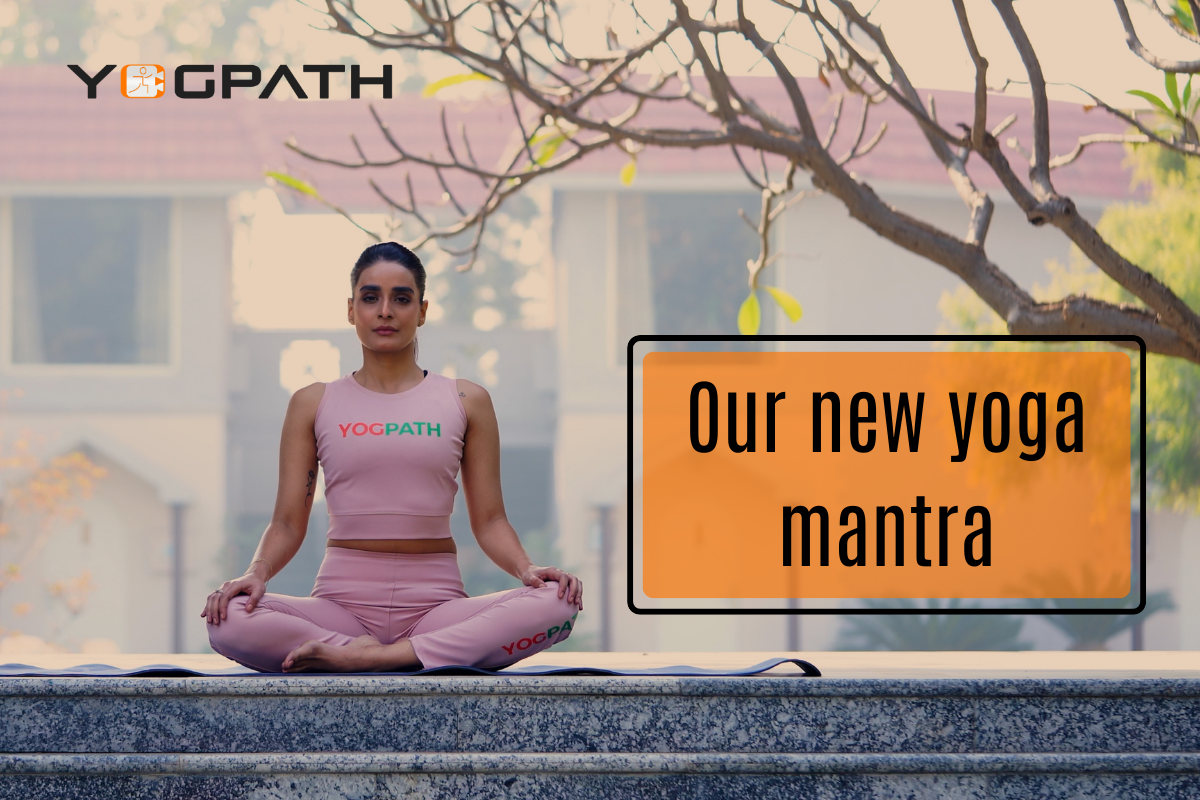
The phrase “smaller, smarter, stronger” is currently serving as our yoga mantra.
We frequently hear comments like, “I can’t do yoga because I’m not that flexible,” which is something we hear as a yoga school. When did this activity become synonymous with such vigorous physical activity that the average person feels they can’t even walk into a studio?
Our intention in reciting this mantra is to debunk that yoga myth.
Go smaller
If you do a search on Google Image Search for “yoga poses,” the majority of the images that come up are of positions that are taken at the very end of the movement range. It’s no wonder that the term “extreme flexibility” has become synonymous with yoga! But does that really serve our best interests?
Triangle yoga pose
“Take your hand to the floor,” “hinge sideways from the pelvis,” and “lengthen the torso as far as you can get there” are all common verbal cues used to guide students into Triangle Pose. In the majority of cases, this will require you to extend your pelvis and hip joints to their fullest possible range of motion. Even if it were helpful for hip mobility and functional movement, this motion is unnecessary and may even be harmful for some people.
Simply shifting your pelvis laterally by a few inches can have a significant impact on the amount of freedom you have in your hips. In addition, if the movement is performed slowly, mindfully, and with control, it will bring the ratio of flexibility to strength into a more even balance.
Move smarter
Play within the confines of that range of motion rather than trying to achieve the full range of motion. Instead of trying to achieve the full range of motion, go to the point where you feel the slightest hint of a stretch sensation.
Try to carry out these actions mindfully. Are you able to maintain control within such a narrow range? Do you feel like you’re going to pass out or experience little jerks? Check to see if you can do even smaller movements; pay attention to the cues that your body gives you, putting more of an emphasis on maintaining smoothness and control than on achieving a particular shape.
Your practise will take on a new level of complexity if you back your poses up with slow, smooth movements and incorporate this into your routine. By beginning to practise mindfulness and continuing to do so while you move, you will be able to improve both your proprioception and your interoception. Your functional strength will increase as a result of this, and your brain muscle will also get stronger!
Get stronger
If you typically place your hand on the ground when you do Triangle pose, try doing it with your hand on a chair instead. Or, even better, try going even smaller and seeing if you can hover your hand in the air while feeling the core muscles in your body engage when you are in that range. Bring your legs closer together and concentrate on developing strong legs rather than wide ones. Engaging your core should be your primary focus rather than trying to lengthen your torso during exercise.
Take note of every single slight contraction of your muscles. The process of getting stronger does not have to be painful, nor does it have to be particularly strenuous. Simply by bringing our attention to the present moment and moving in more subtly but deliberately controlled ways, we can build a significant amount of functional strength.
When it comes to fascia, having less is better than having more
Did you know the fascial matrix of the human body contains potentially far more sensory nerve endings than the retina of the eye?
Because of this, the connective tissue fascial system in your body is the largest sensory organ, as well as the largest organ in the body overall. It is significantly more delicate, sensitive, and responsive than the majority of us fully understand or appreciate. In addition to this, it is found in every single part of the body.
Therefore, from a fascial perspective, less is often more when it comes to movement. When it comes to the detail, moving “small and smooth” is best. Akin to savouring a taste on your tongue or shutting your eyes to get a better feel for the breeze, performing smaller movements while maintaining mindfulness is like having a subtly fun deep-tissue dance party!
These are all things that you can do, regardless of how experienced you are in yoga. It doesn’t matter if you’re a novice, an advanced student, or even an instructor; what’s important is that you keep this in mind: It’s not about how far you can go, but how much you can feel by starting out small.











